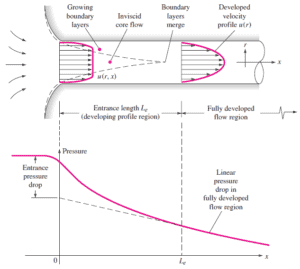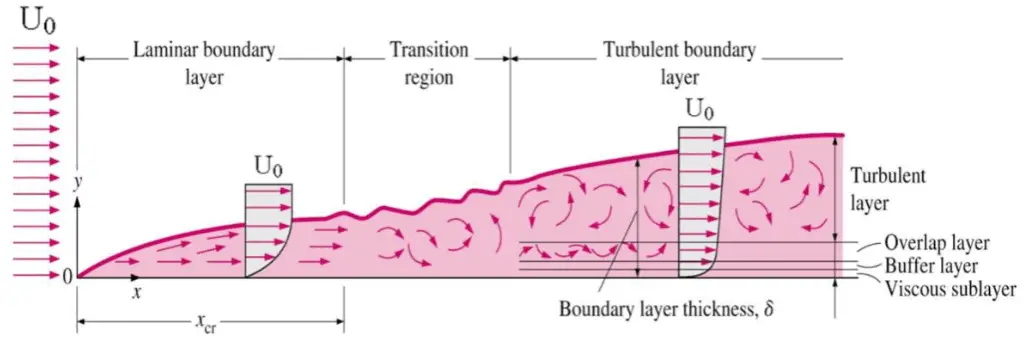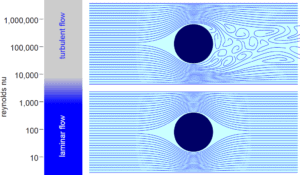Internal vs External Flow
Internal Flow

In fluid dynamics, internal flow is a flow for which the fluid is confined by a surface. Detailed knowledge of behaviour of internal flow regimes is of importance in engineering, because circular pipes can withstand high pressures and hence are used to convey liquids. Non-circular ducts are used to transport low-pressure gases, such as air in cooling and heating systems. The internal flow configuration is a convenient geometry for heating and cooling fluids used in energy conversion technologies such as nuclear power plants.
External Flow
In fluid dynamics, external flow is such a flow in which boundary layers develop freely, without constraints imposed by adjacent surfaces. In comparison to internal flow, external flows feature highly viscous effects confined to rapidly growing “boundary layers” in the entrance region, or to thin shear layers along the solid surface. Accordingly, there will always exist a region of the flow outside the boundary layer. In this region velocity, temperature, and/or concentration does not change in and their gradients may be neglected.
This effect causes the boundary layer to be expanding and the boundary-layer thickness relates to the fluid’s kinematic viscosity.
This is demonstrated on the following picture. Far from the body the flow is nearly inviscid, it can be defined as the flow of a fluid around a body that is completely submerged in it.
We hope, this article, Internal vs External Flow, helps you. If so, give us a like in the sidebar. Main purpose of this website is to help the public to learn some interesting and important information about thermal engineering.

